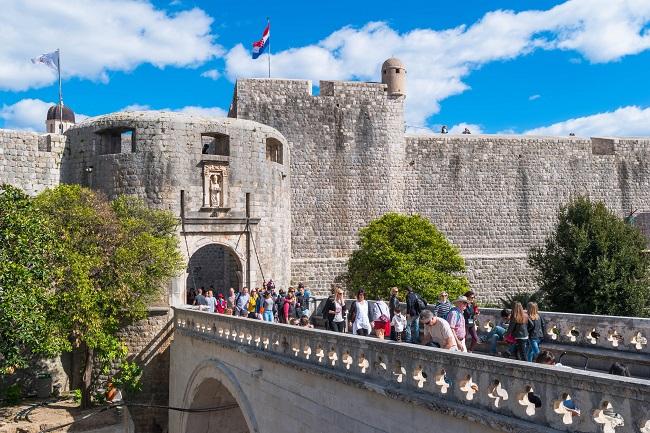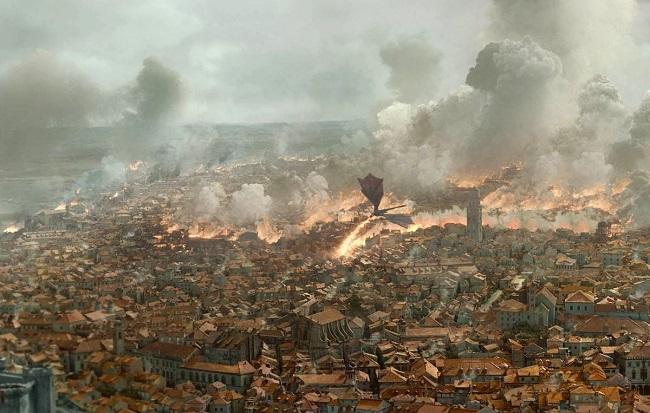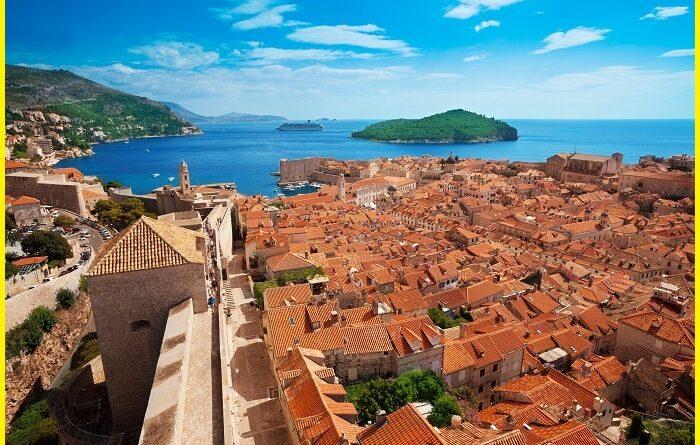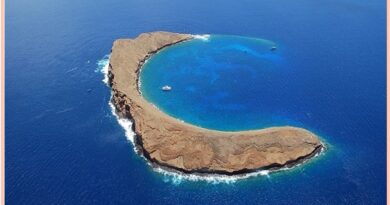Get Rid of ‘DUBROVNIK City Walls Croatia’ Once and For All
Dubrovnik City Walls
Dubrovnik is a spectacular city in Croatia. The Dubrovnik city walls or city walls are a wonderful structure that attracts thousands of visitors every year to the area. It is a series of defensive rocky walls surrounding the city and its historic core. They’re among the finest feature in the world. From the top, the view over the old town and the shimmering Adriatic is Awesome. From the sea, the juxtaposition of pinkish-grey rock and azure waters is mesmerizing. The Fort that is situated in the area, with numerous additions and modifications throughout its history has been considered to be amongst the great fortification systems of the Middle Ages. The old city of Dubrovnik, which includes a substantial portion of the old walls of Dubrovnik, joined the UNESCO list of World Heritage Sites in 1979.

Dubrovnik City walls and Fort History
The construction of the first limestone forts around the city began in the Early Middle Ages, at the end of the 8th century. The oldest systems of fortifications around the town were wooden palisades. Today’s intact city walls, constructed mainly during the 12th to 17th centuries and have long been a source of pride for Dubrovnik. The walls run an uninterrupted course of approximately 2 km in length, encircling most of the old city, and reach a maximum height of about 25 meters.
The walls were reinforced by three circular and 14 quadrangular towers, five bastions, and two angular fortifications. Land walls were additionally reinforced by one larger bastion and nine smaller semicircular ones. The moat that ran around the outside section of the city walls, which were armed with more than 120 cannons, provided superb city defense capabilities. The present shape of the walls was defined in the 14th century after the city gained its full independence from Venetian suzerainty. The peak of its construction lasted from the beginning of the 15th century.
The threat of attacks from the Turks in the 15th century prompted the city to strengthen the existing forts and add new ones so that the entire town was protected within a rock barrier 2km long and up to 25m high. The walls are thicker on the land side up to 6m and range from 1.5m to 3m on the seaside.

The Forts
Round Fort Minceta protects the landward edge of the city from attack. Fort Bokar is the westernmost tower, built to protect Pile Gate. Fort Lawrence, a large, free-standing fortress, was built to guard the city’s western approach against invasion by land and sea, with walls from 4m to 12m thick. The views back over the old town from here are wonderful.
Fort Revelin is the largest of the old-town forts, and sits separate from the city walls, overlooking the Old Harbour and the eastern entrance to the old town. The massive battlement of Fort St John dates to the 16th century. You can see the cannons along the upper terrace during a city walls walk.
City Harbour
One of the oldest sectors of Dubrovnik is the city of Harbour. The Harbour was designed and constructed by engineer Paskoje Milicevic in the late 15th century. The most prominent portion of the Harbour is the three enormous arches of a large arsenal built in the late 12th century. The Harbour is also the oldest shipyard in the city and is still in use today. It was constructed of huge stone blocks laid over wooden foundations without binder. Today, the arsenal hosts the City Cafe and a movie theatre, Harbour is a famous tourist attraction.

City Gates
Historically, the entrance to the city is two elaborate gates- the Pile Gate to the west and the Ploce Gate to the east. A third entrance, the Buza Gate, was added to the northern wall in 1907. The most impressive of the three is the Pile Gate, built in 1537, today this is the main entrance to the town.
Also, read- These are the Die-Hard Tourist places in Nalanda and Pawapuri-Bihar Tourism
Walking the city walls
Walking along Dubrovnik’s city walls into hidden gardens and courtyards in the residential fringes of the town is considered to be the world’s best experience. Starting from the Ploce Gate entrance, one can quickly reach St Luke’s Tower, facing the Old Harbour and Fort Revelin. The northern, landward section of the wall is the highest, reaching a peak at rounded Fort Minceta at the cities. This massive structure was completed in 1464 to designs by Juraj Dalmatinac, who is most famous as the creator of Sibenik’s extraordinary cathedral.
From here it’s mainly downhill as you pass over Pile Gate and then narrows to a single climb toward Fort Bokar at the cities. The seaward stretch of the walls passes through cafe bars and souvenir stores, before terminating at Fort St John at the entrance to Dubrovnik’s Old Harbour.
Game of Thrones filming place
Dubrovnik’s walls and forts feature prominently in the HBO series Game of Thrones. Fort Minceta was used for the exterior shots of Qarth’s House of the Undying, Tyrion Lannister commanded the defense of King’s Landing from the seaward-facing walls during the Battle of the Blackwater.

How to reach Dubrovnik City walls
Dubrovnik Airport is well connected to several international airports as well as daily flights to the capital Zagreb, and other domestic destinations including Rijeka, Osijek, and Split. Dubrovnik is also accessible via Croatia’s excellent highway and road network. The best time to visit the walls is either in the early morning or late afternoon if you are visiting during the high tourist season. Off-season, any time is fine.




Pingback: PUERTO RICO Adventures -What A Destination - Geotourism